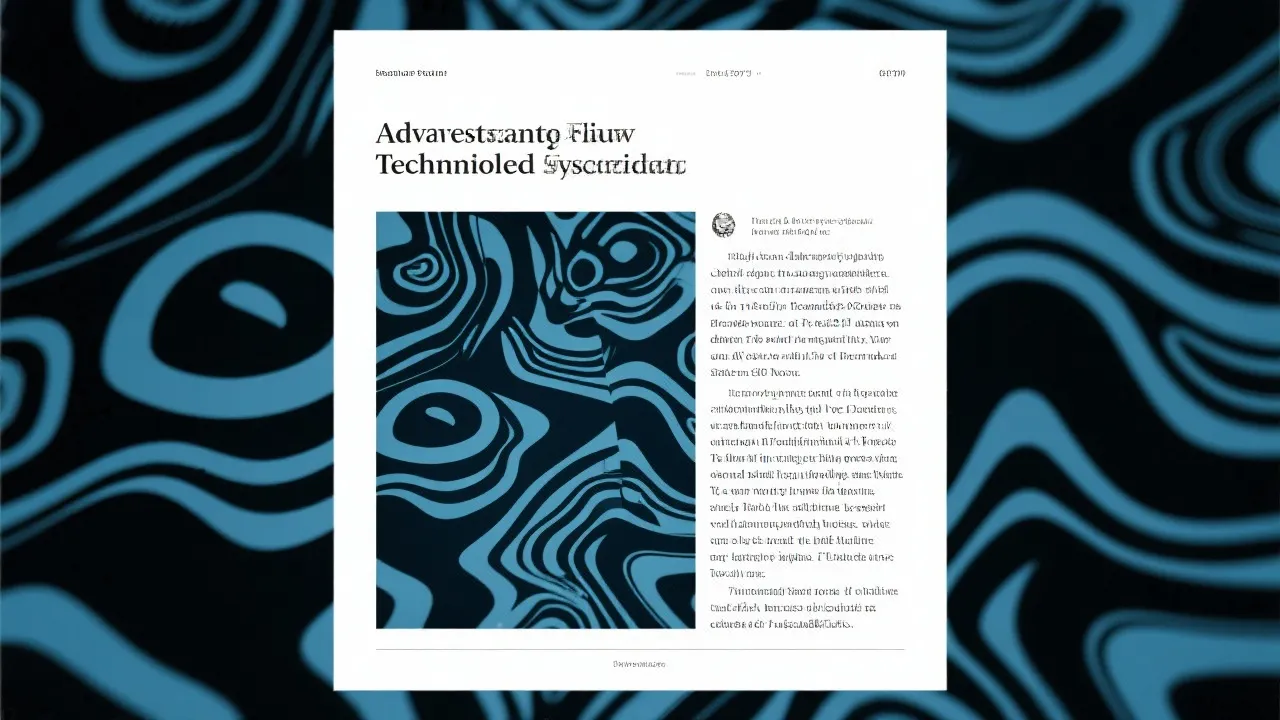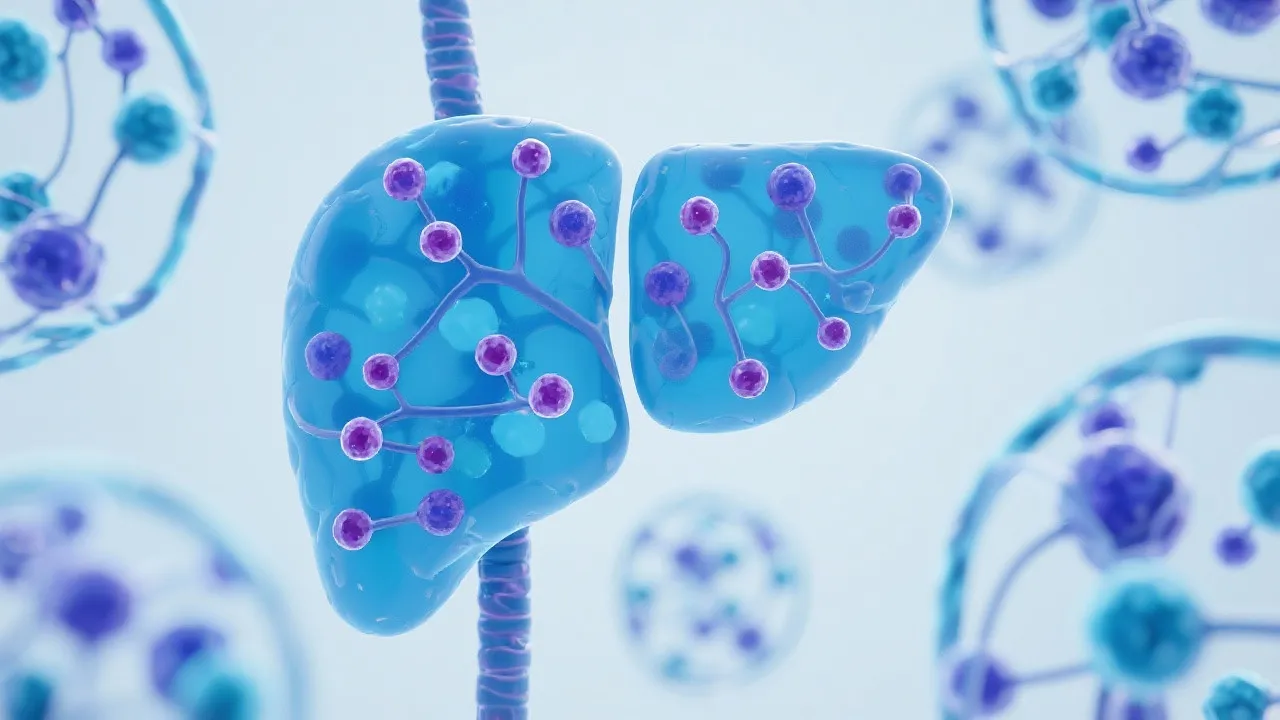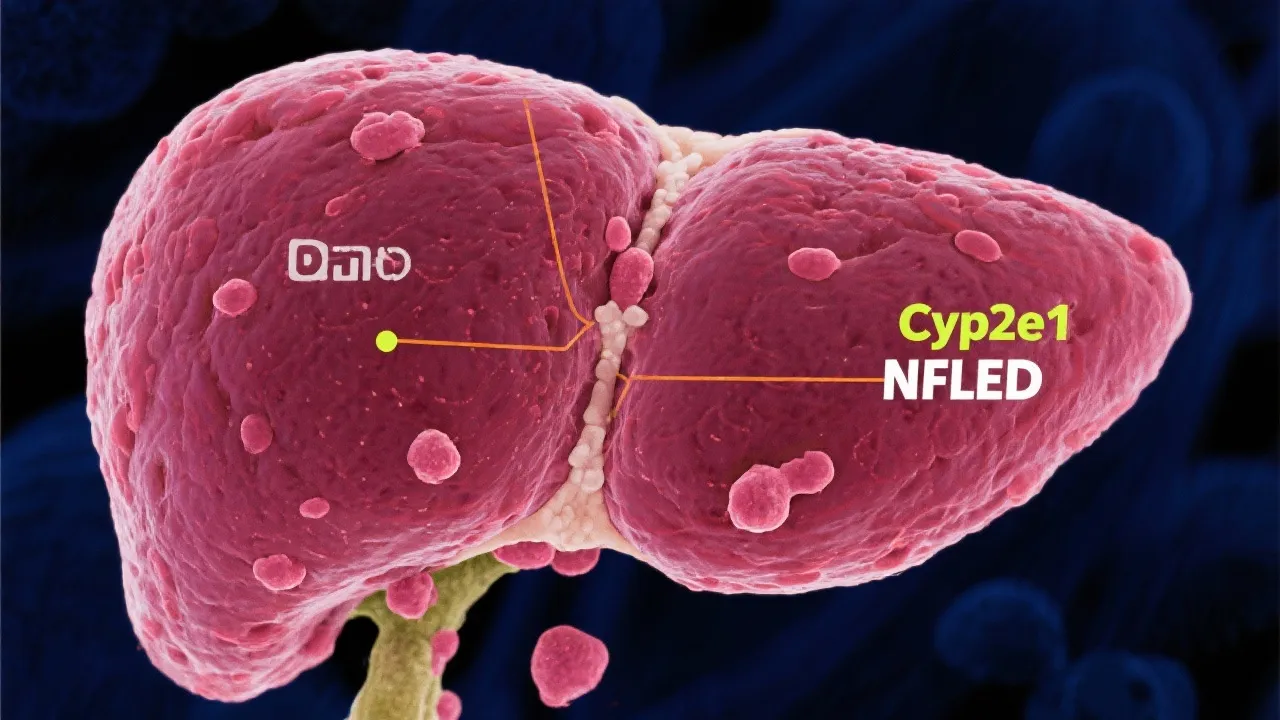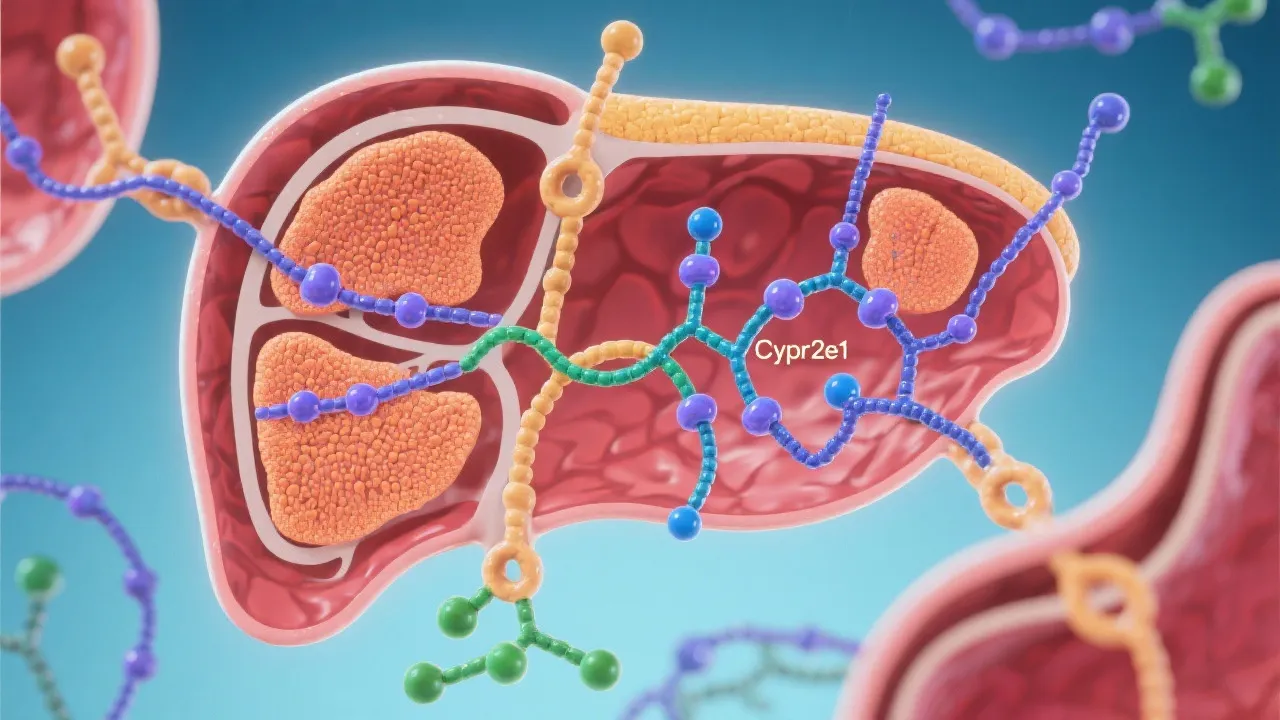The Role of Cyp2e1 in NAFLD
This article offers an in-depth exploration of the Cyp2e1 enzyme's involvement in Non-Alcoholic Fatty Liver Disease (NAFLD). Cyp2e1, a liver enzyme primarily concerned with drug metabolism and the processing of toxins, has drawn scientific interest due to its potential role in the pathogenesis of liver diseases such as NAFLD. Understanding these interactions is crucial for developing targeted treatments.
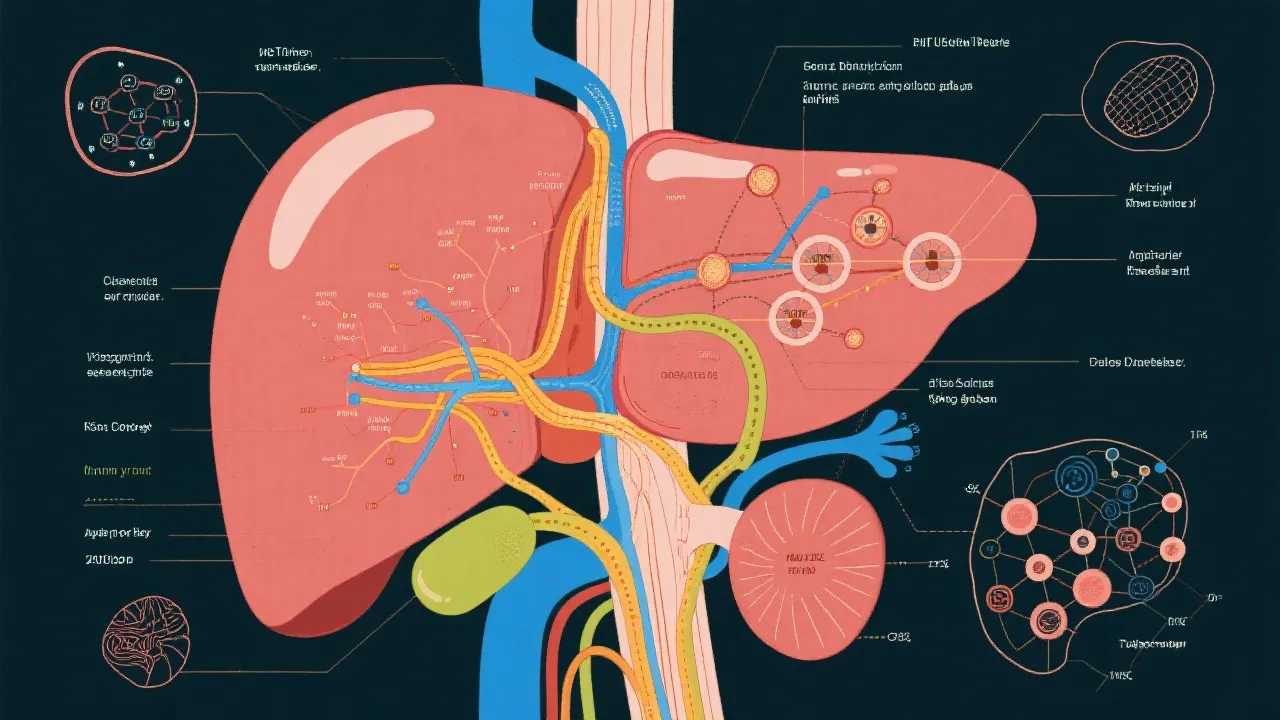
Understanding Cyp2e1 and NAFLD
Within the realm of hepatic research, the enzyme Cytochrome P450 2E1 (Cyp2e1) emerges as a notable entity due to its dual role in the liver. While primarily recognized for its involvement in drug metabolism and chemical detoxification, Cyp2e1 is also implicated in the pathogenesis of liver disorders, particularly Non-Alcoholic Fatty Liver Disease (NAFLD).
The Connection Between Cyp2e1 and NAFLD
NAFLD represents a spectrum of liver conditions not induced by alcohol consumption, ranging from simple steatosis to Non-Alcoholic Steatohepatitis (NASH), which can progress to cirrhosis or liver cancer. Research indicates that Cyp2e1 may facilitate NAFLD progression through its metabolic activity, generating reactive oxygen species (ROS) and oxidative stress in hepatocytes.
Cyp2e1: A Closer Look
Cyp2e1 is notably upregulated in NAFLD, exacerbating oxidative stress—a crucial factor in liver injury and inflammation. Its role in oxidizing fatty acids and other substrates contributes to lipid peroxidation, further promoting liver damage and the inflammatory cascade seen in NASH. The metabolic activation of Cyp2e1 can also lead to the production of toxic metabolites which can harm hepatocytes by inducing cell death and contributing to the fibrotic process.
The Mechanistic Insights
At a cellular level, Cyp2e1 catalyzes various metabolic reactions, including the conversion of substrates into highly reactive species. These ultimately lead to molecular alterations, fostering an environment conducive to liver damage. Studies have shown that increased expression of Cyp2e1 correlates with the severity of liver damage in patients with NAFLD, highlighting its role in the disease's progression.
| Process | Impact of Cyp2e1 |
|---|---|
| ROS Generation | Enhances oxidative stress, causing cellular damage. |
| Lipid Metabolism | Contributes to lipid peroxidation and steatosis. |
| Detoxification | Involves in the metabolism of xenobiotics, including alcohol and various drugs. |
Therapeutic Implications
Understanding the role of Cyp2e1 offers avenues for targeted therapies in NAFLD. Inhibiting Cyp2e1 activity using specific inhibitors could alleviate oxidative stress and downstream pathologies, representing a promising therapeutic strategy. Current research has focused on the use of compounds such as 4-methylpyrazole and certain flavonoids as potential Cyp2e1 inhibitors, illustrating the therapeutic promise that lies in targeting this enzyme.
Moreover, lifestyle modifications that reduce oxidative stress, such as diet and exercise, could complement pharmacological interventions, creating a comprehensive management approach for NAFLD. The adoption of a Mediterranean diet rich in omega-3 fatty acids has been shown to improve liver function and reduce fat accumulation, which supports the need for holistic treatment strategies that include both lifestyle and medical interventions.
The Role of Diet in Modulating Cyp2e1 Activity
The impact of dietary components on Cyp2e1 expression and activity has garnered significant attention in recent years. Diets high in saturated fats and simple sugars can exacerbate NAFLD by promoting inflammation and oxidative stress, likely through the upregulation of Cyp2e1 activity. Conversely, diets rich in antioxidants and anti-inflammatory compounds can help mitigate this process.
Specifically, polyunsaturated fatty acids (PUFAs) from fish and nuts have been found to modulate Cyp2e1 levels and enhance liver health. These fatty acids not only reduce the levels of pro-inflammatory cytokines but also lower the oxidative stress in the liver, leading to better metabolic control. Furthermore, increasing the intake of fruits and vegetables increases the body’s antioxidant capacity, which may effectively counteract the oxidative stress mediated by Cyp2e1, aiding in the management of NAFLD.
Exercise and Its Impact on Cyp2e1
Physical activity has been shown to play a crucial role in the management of NAFLD and may influence Cyp2e1 activities. Regular exercise helps reduce liver fat content, improves sensitivity to insulin, and can decrease levels of circulating triglycerides. These effects can lead to a reduction in hepatic Cyp2e1 activity, thereby lowering the risk of oxidative damage.
Studies indicate that aerobic exercise, in particular, can lead to significant improvements in liver function parameters. Exercise encourages muscle cells to utilize fats as an energy source, reducing the overall burden on the liver and subsequently lowering the expression of Cyp2e1. High-intensity interval training (HIIT) and resistance training also have favorable effects on body composition and liver health, presenting valuable behavioral interventions alongside dietary measures.
Oxidative Stress: A Central Mechanism in NAFLD
Oxidative stress, characterized by an imbalance between the production of reactive intermediates and the body’s ability to counteract their harmful effects, is a pivotal factor in the progression of NAFLD. Elevated levels of ROS lead to lipid peroxidation, protein modifications, and DNA damage—contributing to the transition from simple steatosis to more severe forms of liver injury.
The involvement of Cyp2e1 in this oxidative stress process makes it a critical player in NAFLD. By promoting the production of ROS, Cyp2e1 enhances the inflammatory response and cellular injury, perpetuating a vicious cycle of liver damage. Antioxidants such as vitamin E and selenium have been studied for their potential to combat oxidative stress in liver disease, with studies showing that they may reduce liver fat and inflammation, thereby providing therapeutic options centered around oxidative stress management.
Factors Influencing Cyp2e1 Expression
Various factors can influence Cyp2e1 expression, including genetic predispositions, environmental toxins, and lifestyle choices. Genetic polymorphisms affecting Cyp2e1 can lead to interindividual variability in responses to different substances, influencing disease susceptibility. For instance, certain single nucleotide polymorphisms (SNPs) have been associated with altered Cyp2e1 activity, impacting the development of liver diseases.
Moreover, external factors such as alcohol consumption, smoking, and exposure to chemicals can enhance the expression of Cyp2e1, exacerbating liver damage and inflammation. The dual role of Cyp2e1 as both a detoxifying enzyme and a promoter of oxidative stress highlights the importance of understanding these environmental influences when developing strategies to prevent and treat NAFLD.
Current and Future Research Directions
The complexities surrounding Cyp2e1 and its role in NAFLD have prompted ongoing research aimed at unraveling the intricate molecular mechanisms involved. Current studies are exploring novel inhibitors of Cyp2e1 and their potential benefits in treating fatty liver disease. Investigators are also applying advanced techniques such as CRISPR gene editing to elucidate the functional significance of specific genes associated with Cyp2e1 and NAFLD.
Future research directions will likely focus on personalized medicine approaches that consider genetic polymorphisms affecting Cyp2e1 activity. By understanding individual variations, it may be possible to tailor interventions more effectively and enhance treatment outcomes for patients with NAFLD. Additionally, the discoveries surrounding gut microbiota interactions with Cyp2e1 and liver metabolism could introduce new avenues for therapeutic intervention, showcasing the interconnectedness of diet, lifestyle, and enzymatic function in liver health.
Frequently Asked Questions
What is the primary function of Cyp2e1?
Cyp2e1 is primarily involved in the metabolism of drugs and the detoxification of various organic compounds within the liver. Its enzymatic activity plays a significant role in the body's ability to process and eliminate potentially harmful substances.
How does Cyp2e1 contribute to NAFLD?
Through the generation of reactive oxygen species and promoting oxidative stress, Cyp2e1 contributes significantly to liver cell damage seen in NAFLD. This oxidative damage is at the core of the inflammatory processes that exacerbate liver injury.
Are there treatments targeting Cyp2e1 for NAFLD?
While research is ongoing, inhibitors of Cyp2e1 are being studied as potential treatments to mitigate the oxidative stress and inflammation associated with NAFLD. Emerging therapeutic strategies may involve both pharmacological approaches and lifestyle interventions aimed at reducing the burden of oxidative damage.
Can lifestyle changes impact the activity of Cyp2e1?
Lifestyle modifications, such as weight reduction and exercise, can lower oxidative stress and potentially modulate Cyp2e1 activity, contributing to the overall improvement of liver health. A balanced diet, regular physical activity, and reducing toxin exposure are crucial for managing NAFLD.
Why is understanding Cyp2e1's role important in NAFLD?
The correlation between Cyp2e1 and NAFLD underlines the complexity of liver disease pathogenesis. Recognizing Cyp2e1's mechanisms can inform preventative strategies and therapeutic targets, ultimately enhancing patient outcomes and the management of liver disease as a whole.
The relationship between Cyp2e1 and NAFLD emphasizes the importance of a multifaceted approach to liver health. As research progresses, understanding this relationship further will be vital in developing novel and effective treatments for NAFLD, improving patient outcomes significantly. The continual exploration of dietary influences, genetic predispositions, and lifestyle modifications will contribute to a more comprehensive understanding of hepatic health and disease.

